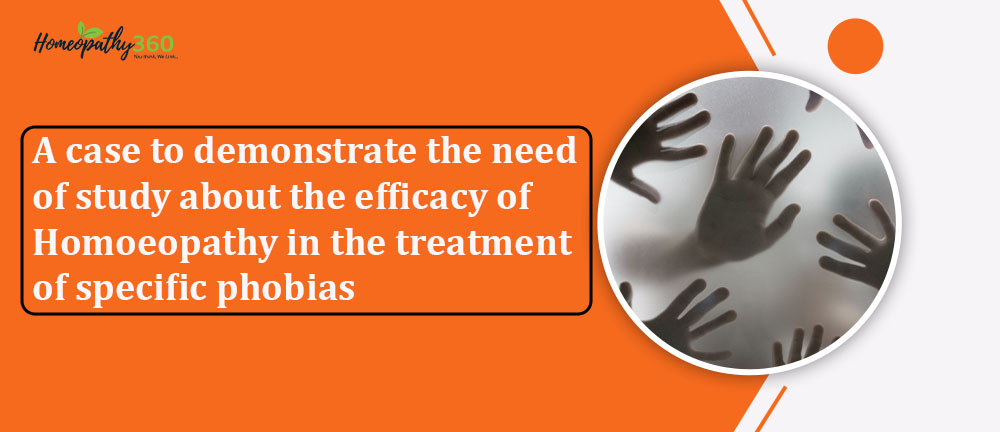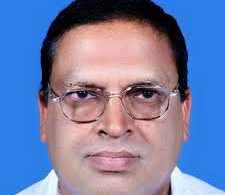
ABSTRACT
Social anxiety disorder is most common anxiety disorder, characterized by excessive fears of humiliation or embarrassment in various social situations. It is highly co-morbid with other anxiety disorders, depression, and substance use disorders. It is more than just a little shyness. Social anxiety disorder severely affects individuals, their families and society, in the form of functional disability, poor educational achievement, loss of work productivity, social impairment, greater financial dependency and impairment in quality of life.
KEYWORDS: Social Anxiety Disorder, Social Phobia, Public Speaking, Substance abuse, Depression, Cognitive Behavioral Therapy
ABBREVIATIONS: SAD- Social Anxiety Disorder, SP- Social phobia, CBT- Cognitive Behavioral Therapy, SSRIs-Selective Serotonin Reuptake Inhibitors ,PTSD-Post-Traumatic Stress Disorder, OCD- Obsessive Compulsive Disorder
INTRODUCTION
Social anxiety disorder (SAD) is characterized by excessive fear of embarrassment, humiliation, or rejection when exposed to possible negative evaluation by others when engaged in a public performance or social interactions. It is also known as social phobia.
Social anxiety is a chronic disorder, typically lasting for 6 months or more. Additionally, many patients with SAD may not seek treatment because they believe the social anxiety to be part of their personality structure, and therefore does not require treatment.(1)
EVALUATION
Evaluation of social anxiety disorder must include its diagnostic criteria as classified in the Diagnostic and Statistical Manual of Mental Disorders Fifth Edition (DSM-5).
Criteria include pronounced fear or anxiety around one or multiple social situations where a person is possibly exposed to the possible scrutiny of others.
The person fears they will act a certain way that may be evaluated negatively. The social situation, for the most part, provokes anxiety or fear. The situations are either endured with anxiety or fear or avoided entirely. This fear or anxiety is disproportionate to the threat actually posed by the situation. The avoidance, fear, or anxiety lasts typically for at least 6 months and causes significant impairment or distress in an important area of functioning.(1)
ETIOLOGY
Family and twin studies suggest that genetic factor’s role as an etiological factor in social anxiety disorder is believed to be largely dependent on environmental factors
Parenting that is overly controlling or intrusive may result in inhibited temperament in children, increasing the risk for SAD. Adverse and stressful life events may also increase risk.
Recent evidence suggests the ‘extended amygdala’ to be an essential region in anxiety disorders.(1)
Stressful social events in early life (for example, being bullied, familial abuse, public embarrassment or one’s mind going blank during a public performance) are commonly reported by people with social anxiety disorder.(2)
PREVALENCE
Data from the National Comorbidity Survey reveals that social anxiety disorder is the third most common psychiatric condition after major depression and alcohol dependence Lifetime prevalence rates of up to 12% have been reported compared with lifetime prevalence estimates for other anxiety disorders of 6% for generalised anxiety disorder, 5% for panic disorder, 7% for post-traumatic stress disorder (PTSD) and 2% for obsessive-compulsive disorder (OCD) Women and men are equally likely to seek treatment for social anxiety disorder, but community surveys indicate that women are somewhat more likely to have the condition.
50 to 80% of people with social anxiety disorder presenting to health services have at least one other psychiatric condition, typically another anxiety disorder, depression or a substance-use disorder.(2)
The most common type of anxiety disorders in children was found to be social anxiety disorder (83.33%) and separation anxiety disorder (76.66%).(3)
THE ORIGINS OF SOCIAL PHOBIA
Retrospective reports indicate an average age of onset of social phobia between early and late adolescence.
Four major factors that may be important to (the development of self-consciousness and social evaluative concerns in children) the origins of social phobia: (a) genetic factors; (b) family factors; (c) other environmental factors; and (d) developmental factors
Parental overprotection becomes associated with anxiety is the message conveyed to the child that the world is harmful and the child needs to be protected because he or she is incapable of defending himself or herself. This instills in the child a sense of inability to cope. These factors of threat and perceived inability to cope are fundamental to the experience of anxiety.
Several other environmental experiences may include common factors such as traumatic social experiences, childhood illness, social isolation, being bullied or teased by peers, or being the firstborn or only child.
Being bullied, neglected, and having few or no friends to play with at school may further contribute to the child’s perception of himself or herself as incompetent.
Childhood illness may be a contributing factor to social anxiety and shyness.
Firstborn children are more likely to be shy because of the pressure often placed on firstborn children to succeed.
The developmental period of adolescence marks the beginning of many physical, cognitive, and social changes, with adolescence comes the “onset of puberty; entering a new school situation and the onset of formal operations thinking in which the child is able to distinguish between the perspectives of other’s and one’s self-view”. The increase in self-consciousness is a trigger for the onset of increased social fears.(4)
PATHOPHYSIOLOGY
Studies in the past have found that persons with performance-type social anxiety disorder may have a greater response of the autonomic nervous system, including elevated heart rate. Multiple neurotransmitter systems, including serotonin, dopamine, and glutamate, may be implicated in the pathogenesis of social anxiety disorder.(1)
TYPE OF SOCIAL ANXIETY DISORDER
Individuals with social anxiety disorder vary considerably in the number and type of social situations that they fear and in the number and range of their feared outcomes.
These two features (feared situations and feared outcomes) can vary independently. For example, some people fear just one or two situations but have multiple feared outcomes (such as, ‘I’ll sound boring’, ‘I’ll sweat’, ‘I’ll appear incompetent’, ‘I’ll blush’, ‘I’ll sound stupid’ or ‘I’ll look anxious’). Others can fear many situations but have only one feared outcome (such as ‘I’ll blush’).
The most common distinction is between generalised social anxiety disorder, where individuals fear most social situations, and non-generalised social anxiety disorder, where individuals fear a more limited range of situations (which often, but not always, involve performance tasks such a public speaking).The generalised subtype is associated with greater impairment and higher rates of comorbidity with other mental disorders.The generalised subtype also has a stronger familial aggregation, an earlier age of onset and a more chronic course.(2)
IMPACT OF SOCIAL ANXIETY DISORDER ON PATIENTS
Social anxiety disorder should not be confused with normal shyness, which is not associated with disability and interference with most areas of life. Educational achievement can be undermined, with individuals having a heightened risk of leaving school early and obtaining poorer qualifications. The majority of people with social anxiety disorder are employed; however, they report taking more days off work and being less productive because of their symptoms. People may avoid or leave jobs that involve giving presentations or performances.
On average, individuals with social anxiety disorder have fewer friends and have more difficulty getting on with friends. They are less likely to marry, are more likely to divorce and are less likely to have children. Social fears can also interfere with a broad range of everyday activities, such as visiting shops, buying clothes, having a haircut and using the telephone.(2)
Social phobia (SP) is a common disorder in children and adolescents. SP affects up to 2% of children and adolescents with a peak age at onset between 11 and 12 years. SP affects both genders equally before puberty; but after puberty, girls are more likely to be affected.(5)
Children may manifest their anxiety somewhat differently from adults. As well as shrinking from interactions, they may be more likely to cry or ‘freeze’ or have behavioural outbursts such as tantrums. Particular situations that can cause difficulty for socially anxious children and young people include participating in classroom activities, asking for help in class, activities with peers (such as team sports or attending parties and clubs), participating in school performances and negotiating social challenges.(2)
MENTAL DISORDERS ASSOCIATED WITH SOCIAL ANXIETY DISORDER
Four-fifths of adults with a primary diagnosis of social anxiety disorder will experience at least one other psychiatric disorder at sometime during their life.
Among adults, social anxiety disorder is particularly likely to occur alongside other anxiety disorders (up to 70%), followed by any affective disorder (up to 65%), nicotine dependence (27%) and substance-use disorder (about 20%). Substance misuse problems can develop out of individuals initial attempts to manage their social anxiety with alcohol and drugs. As social anxiety disorder has a particularly early age of onset, many of these comorbid conditions develop subsequently.(2)
DIFFERENTIAL DIAGNOSIS
Social anxiety disorder must be differentiated from other disorders, including neurodevelopment disorders such as autism spectrum disorder, panic disorder and agoraphobia, depressive disorders, substance-related and addictive disorders, body dysmorphic disorder, and personality disorders such as schizoid personality disorder and avoidant personality disorder. (1)
COMPLICATIONS
Co-morbid psychiatric disorders occur in up to 90% of patients with SAD. SAD’s presence is a predictor for the development of major depression and alcohol use disorder. Patients who have co-morbid psychiatric disorders have an increased likelihood of greater severity of symptoms, treatment resistance, decreased functioning, and increased rates of suicide.(1)
TREATMENT / MANAGEMENT
There is a large amount of evidence supporting the efficacy of medications and cognitive behavioral therapy (CBT) in social anxiety disorder. According to meta-analysis, SAD responds well to treatment with individual CBT and selective serotonin reuptake inhibitors (SSRIs). (1)
Homoeopathic Treatment
Homoeopathy treats psychological complaints in very effective way .Patients suffering from social phobia show marvelous recovery when treated with individualized Homoeopathic medicines.
Homoeopathic medicines seen to be more effective were Calcarea carbonica, Calcarea phosphoric, Phosphorous, Silicea, Natrum muriaticum etc. 9 patients (30%) showed marked improvement, 10 patients (33.33%) showed moderate improvement and 11 patients (36.66%) showed mild improvement.(3)
There are lots of rubrics in Repertory, covering the symptoms of patients suffering from social phobia.
MIND-TIMIDITY
MIND-TIMIDITY-public; about appearing in
MIND-TIMIDITY-public; about appearing in –talk in public; to
MIND-ANTICIPATION-stage fright
MIND-ANTICIPATION- stage fright –unusual ordeal; of any
MIND- ANXIETY- perspiration-during-hands; with perspiration and trembling of
MIND-CONFIDENCE –want of self confidence
MIND-COMPANY-aversion to
MIND- FEAR –people of
MIND –ANXIETY –speaking when company, in
MIND –DELUSION –laughed at and mocked at; being
MIND- DELUSION – confusion; others will observe her
MIND- SENSITIVE- criticism; to
MIND-AILMENTS FROM- embarrassment
MIND-AILMENTS FROM-honor; wounded
MIND-AILMENTS FROM-mortification
MIND-AILMENTS FROM-rudeness of others
MIND-AILMENTS FROM-rejected; from being
MIND-INSECURITY; mental
MIND-FORGETFUL-words while speaking; of
MIND-DWELLS- past disagreeable occurrences, on
GENERALS-TREMBLING-externally anxiety from
There are following important medicines covering above rubrics in Synthesis Repertory-
Lycopodium clavatum,Staphysagria,Gelsemium, Ambra grisea, Baryta Carb, Aconite, Argentum nitricum ,Natrum muriaticum, Carcinosinum, Silicea, Pulsatilla ,Sepia, Ignatia(6)
CONCLUSION
Social anxiety disorder is highly co-morbid with depression, substance use disorder and other anxiety disorder. Individuals thinking that social anxiety are part of their personality; lack of recognition of condition by health care professionals and lack of information about availability of effective treatment are some reasons behind low rate and delay in seeking treatment in affected individuals.
REFERENCES
- Rose GM, Tadi P. Social Anxiety Disorder. [Updated 2021 Sep 29]. In: StatPearls [Internet]. Treasure Island (FL): StatPearls Publishing; 2022 Jan-. Available from: https://www.ncbi.nlm.nih.gov/books/NBK555890/
- National Collaborating Centre for Mental Health (UK). Social Anxiety Disorder: Recognition, Assessment and Treatment. Leicester (UK): British Psychological Society (UK); 2013. (NICE Clinical Guidelines, No. 159.) 2, SOCIAL ANXIETY DISORDER. Available from: https://www.ncbi.nlm.nih.gov/books/NBK327674/
- Sreekumar V, Kurup VC. A clinical study on the role of homoeopathy in managing anxiety disorders in school going children of Kanniyakumari district. GJSFR. 2020:20(3)
- Hudson, Jennifer & Rapee, Ronald. (2000). The Origins of Social Phobia. Behavior Modification. 24. 102-129. 10.1177/0145445500241006.
- Cheung A, Jensen P. Major disturbances of emotion and mood. In: Developmental –Behavioral Pediatrics. Elsevier;2009. p. 461-73
- Schroyens F. Augmented Clinical Synthesis Repertorium Homoeopathicum Syntheticum. 9.1ed. Noida,India: B.Jain Publishers (P) LTD;2016
About the authors:
- Monika Yadav, PG Scholar, State National Homoeopathic Medical College & Hospital, Lucknow, U.P.
- Tahura Ahmad, PG Scholar, State National Homoeopathic Medical College & Hospital, Lucknow, U.P.





